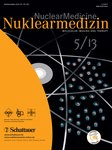
NUKLEARMEDIZIN-NUCLEAR MEDICINE
Scope & Guideline
Advancing the Frontiers of Nuclear Medicine.
Introduction
Aims and Scopes
- Clinical Applications of Nuclear Imaging:
The journal highlights studies related to the clinical applications of various nuclear imaging techniques, including PET and SPECT, in diagnosing and managing a range of conditions such as cancer, thyroid diseases, and neurological disorders. - Radiopharmaceutical Development and Evaluation:
Research on the synthesis, characterization, and clinical evaluation of novel radiopharmaceuticals is a core focus, aiming to improve diagnostic accuracy and therapeutic outcomes in nuclear medicine. - Theranostics in Nuclear Medicine:
The journal features articles on theranostics, which combine diagnostic imaging with targeted therapy, particularly in oncology, to tailor treatments based on individual patient needs. - Artificial Intelligence and Machine Learning in Imaging:
There is a growing emphasis on the application of artificial intelligence and machine learning techniques in the analysis of nuclear medicine images, enhancing diagnostic capabilities and treatment planning. - Guidelines and Recommendations:
The journal provides updates on clinical guidelines, recommendations, and best practices in nuclear medicine, ensuring that practitioners are informed about the latest standards of care. - Educational Initiatives in Nuclear Medicine:
It also emphasizes the importance of education and training within the field, including workshops, conferences, and updates from professional societies.
Trending and Emerging
- Prostate Cancer Imaging and Therapy:
Recent publications indicate a significant increase in research related to prostate cancer, particularly the use of PSMA-targeting radioligands and PET imaging for diagnosis and treatment planning. - Integration of Artificial Intelligence:
The application of artificial intelligence and machine learning in nuclear medicine is rapidly gaining traction, with numerous studies focusing on improving diagnostic accuracy and treatment outcomes through advanced data analysis. - Personalized Medicine and Theranostics:
There is a growing focus on personalized approaches to treatment, particularly in oncology, where theranostic strategies are being developed to tailor therapies to individual patient profiles. - Radiomics and Image Analysis:
Emerging research in radiomics, which involves extracting quantitative features from medical images, is on the rise, enhancing prognostic predictions and treatment planning. - Clinical Guidelines and Standardization:
The journal is increasingly publishing articles that aim to establish clinical guidelines and standardize practices in nuclear medicine, facilitating better patient care and safety.
Declining or Waning
- Traditional Scintigraphy Techniques:
There is a noticeable decline in studies focusing solely on traditional scintigraphy methods, as newer imaging modalities like PET and advanced hybrid imaging techniques gain more attention. - General Diagnostic Imaging:
The focus on general diagnostic imaging without specific applications or advancements is diminishing, with more emphasis being placed on targeted imaging approaches and personalized medicine. - Basic Research without Clinical Relevance:
Papers that present basic research findings lacking direct clinical applications or implications are becoming less common, as the journal shifts towards studies that bridge the gap between research and clinical practice. - Non-Oncological Applications:
The exploration of nuclear medicine applications outside oncology is experiencing a decrease, with a stronger concentration on cancer-related imaging and therapy. - Static Imaging Protocols:
There is a reduction in publications discussing static imaging protocols, as dynamic imaging techniques and their benefits are increasingly preferred.
Similar Journals

EUROPEAN JOURNAL OF NUCLEAR MEDICINE AND MOLECULAR IMAGING
Advancing the Frontiers of Nuclear Medicine and ImagingThe European Journal of Nuclear Medicine and Molecular Imaging is a prestigious, peer-reviewed journal published by Springer, dedicated to advancing the field of nuclear medicine and molecular imaging. With an impressive impact factor and ranked in the Q1 category for both Medicine and Radiology, Nuclear Medicine and Imaging, this journal is a pivotal platform for researchers and practitioners to disseminate significant findings from 1996 to the present, reflecting the evolution of the field. The journal boasts a notable Scopus rank, standing at #8 out of 333 in its category, placing it in the top 3% of published works, which highlights its critical importance in shaping contemporary practices and research innovations. Although it does not offer an open-access model, the journal provides various access options to ensure that important research is accessible to professionals, students, and academics alike. Through rigorous peer review and a commitment to high-quality publication, the European Journal of Nuclear Medicine and Molecular Imaging plays an essential role in the advancement of nuclear medicine, contributing to better diagnostic and therapeutic outcomes globally.
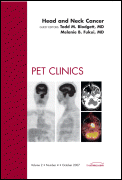
PET Clinics
Transforming Medical Imaging with Cutting-Edge Techniques.PET Clinics, published by Elsevier Inc, is a premier academic journal focusing on the advancements and applications of Positron Emission Tomography (PET) in various medical fields. With its ISSN 1556-8598 and E-ISSN 1559-7814, the journal has established a strong reputation in the scientific community, reflected in its impressive Q1 quartile rankings in Medicine (miscellaneous), Radiation, and Radiology, Nuclear Medicine, and Imaging for 2023. The journal operates within a well-defined scope that bridges innovative research and practical clinical applications, targeting professionals, researchers, and students keen on the intersection of nuclear medicine and imaging technologies. Although not an open-access journal, PET Clinics ensures accessibility through institutional subscriptions, making valuable insights available to the academic community. With an emphasis on enhancing patient care and treatment outcomes through cutting-edge imaging techniques, this journal serves as an essential resource for those seeking to expand their knowledge and expertise in the rapidly evolving field of PET.

Egyptian Journal of Radiology and Nuclear Medicine
Pioneering Research for a Healthier TomorrowThe Egyptian Journal of Radiology and Nuclear Medicine, published by Springer, is a premier open access journal that has provided valuable insights and advancements in the fields of radiology and nuclear medicine since its initiation in 2010. With an E-ISSN of 2090-4762, this journal is dedicated to bridging the gap between research and clinical practice, allowing for the dissemination of high-quality research to a global audience. Situated in Germany, it enjoys a robust reputation in the academic community, evidenced by its categorization in the Q3 quartile for 2023, as well as its Scopus ranking, where it holds a position of #225 out of 333 in the domain of Radiology, Nuclear Medicine and Imaging, placing it in the 32nd percentile. The journal's open access model ensures that researchers, professionals, and students can freely access innovative studies, reviews, and case reports that discuss the latest methodologies, technological advancements, and clinical outcomes in radiology and nuclear medicine. As it looks toward its converged years spanning from 2010 to 2024, the Egyptian Journal of Radiology and Nuclear Medicine continues to be an essential resource for advancing knowledge and fostering ongoing collaboration in these critical fields.
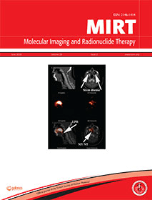
Molecular Imaging and Radionuclide Therapy
Elevating the standards of molecular imaging research.Molecular Imaging and Radionuclide Therapy is an esteemed academic journal published by GALENOS PUBL HOUSE, dedicated to advancing the fields of radiology, nuclear medicine, and imaging. Since its inception, this Open Access journal has facilitated the dissemination of high-quality research and innovative practices in molecular imaging and radionuclide therapy, making it a vital resource for researchers, professionals, and students alike. With an ISSN of 2146-1414 and an E-ISSN of 2147-1959, the journal has established its presence globally while specifically catering to the Turkish academic and medical community. As of 2023, it is ranked #241/333 in the Radiology, Nuclear Medicine and Imaging category on Scopus, holding a respectable Q3 quartile ranking. The journal serves as a platform for sharing impactful findings from 2017 to 2024, reinforcing its commitment to open access since 2011. With a dedication to enhancing the knowledge base in molecular imaging and therapy, it remains an important conduit for scholarly communication and collaborative research developments in this dynamic field.
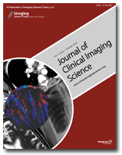
Journal of Clinical Imaging Science
Unlocking New Perspectives in Clinical ImagingWelcome to the Journal of Clinical Imaging Science, a dedicated platform for disseminating pioneering research in the field of radiology, nuclear medicine, and imaging. Published by SCIENTIFIC SCHOLAR LLC, this peer-reviewed journal offers a prominent forum for researchers, professionals, and students to share insights and advancements that push the boundaries of clinical imaging practice and technology. With a proud history of publication since 2011 and converged years extending through 2024, the journal currently ranks in the top quartile (Q3) as per the 2023 categorization in the relevant field, positioning itself as a valuable resource among its peers. While embracing a non-open access model, it guarantees high-quality content that contributes to the 36th percentile of Scopus rankings for medicine and imaging sciences. The Journal of Clinical Imaging Science aspires to enhance the knowledge base in clinical settings and promote innovative methodologies, serving as an essential tool for advancing education and practice in imaging sciences.
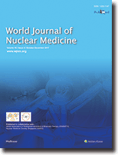
World Journal of Nuclear Medicine
Fostering Collaboration in the Nuclear Medicine CommunityWorld Journal of Nuclear Medicine, published by THIEME MEDICAL PUBL INC, is a premier peer-reviewed journal dedicated to advancing the field of nuclear medicine. With an Open Access model established since 2011, this journal ensures that high-quality research is accessible to a wide audience, fostering knowledge sharing and collaboration among researchers, clinicians, and students alike. The journal aims to publish innovative studies, reviews, and clinical trials that contribute significantly to both the theoretical and practical aspects of nuclear medicine, enhancing diagnostic and therapeutic techniques within this critical area of healthcare. As the journal continues to grow in visibility and impact, it remains an essential resource for those seeking to stay at the forefront of advancements in nuclear medicine.
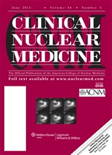
CLINICAL NUCLEAR MEDICINE
Pioneering Research for Enhanced Patient CareCLINICAL NUCLEAR MEDICINE is a premier journal dedicated to the field of nuclear medicine, published by Lippincott Williams & Wilkins. With a history of excellence since its inception in 1978, the journal serves as a vital resource for researchers, healthcare professionals, and students seeking to deepen their understanding of this rapidly evolving discipline. The journal holds a commendable Q2 ranking in both Medicine (miscellaneous) and Radiology, Nuclear Medicine and Imaging, reflecting its significant impact on advancing clinical practices and research. While currently not offered as an open-access publication, CLINICAL NUCLEAR MEDICINE ensures rigorous peer review and high-quality publications, contributing to the broad dissemination of cutting-edge studies and reviews. With its comprehensive scope encompassing both diagnostic and therapeutic nuclear medicine applications, researchers around the globe turn to this journal to stay informed and inspire innovations in patient care for the years leading up to 2024 and beyond.
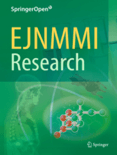
EJNMMI Research
Elevating Standards in Radiology and Nuclear Medicine.EJNMMI Research, a prominent journal published by Springer, plays a pivotal role in advancing the fields of radiology, nuclear medicine, and imaging. With an impact factor that reflects its strong standing—ranking in the top 22% of its category (Q1 as of 2023)—this open-access journal offers researchers, professionals, and students unparalleled access to innovative research and developments in the field since its inception in 2011. Based in Germany, EJNMMI Research fosters global collaboration by ensuring that cutting-edge findings are freely accessible, thereby accelerating scientific discovery and application. With an emphasis on high-quality, peer-reviewed articles, it serves as an essential resource for those seeking to stay at the forefront of nuclear medicine and imaging. By bridging theoretical insights with practical applications, the journal not only influences academic discourse but also supports ongoing advancements in clinical practices.
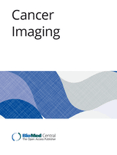
CANCER IMAGING
Pioneering Insights for Enhanced Cancer CareCANCER IMAGING, published by BMC, stands as a leading open-access journal in the realms of oncology and medical imaging, significantly contributing to the advancement of cancer research since its inception in 2000. With an impressive impact across multiple domains—most notably ranking Q1 in prestigious categories such as Medicine (miscellaneous), Oncology, and Radiology—this journal ensures high visibility and influence within the academic community. As of 2023, it is recognized in various Scopus rankings, securing top positions in the fields of Radiology, Nuclear Medicine, and Imaging, alongside Radiological and Ultrasound Technology. The journal's commitment to open-access publication, adopted in 2014, enhances accessibility for researchers, healthcare professionals, and students alike, fostering an inclusive environment for sharing critical advancements and innovative methodologies in cancer imaging. Set in the vibrant landscape of the United Kingdom, CANCER IMAGING continues to play a vital role in elucidating the complexities of cancer diagnostics and treatment, establishing itself as an essential resource for those pursuing excellence in cancer care and research.

NUCLEAR MEDICINE REVIEW
Unveiling Breakthroughs in Imaging TechniquesNUCLEAR MEDICINE REVIEW is a distinguished journal in the field of radiology, nuclear medicine, and imaging, published by VIA MEDICA in Poland. Since its transition to an open access format in 1999, this journal has been dedicated to promoting the dissemination of knowledge and research findings across a global audience. With a focus on innovative approaches and advancements in nuclear medicine, it aims to serve as a key resource for researchers, professionals, and students who are working to further the understanding of nuclear imaging and its applications. In 2023, the journal was classified in the Q3 category within Radiology, Nuclear Medicine and Imaging, and Q4 in the broader category of Medicine (miscellaneous), highlighting its growing reputation in the academic community. As of the latest assessments, the journal has been ranked #235 out of 333 in its field according to Scopus metrics, reflecting its commitment to excellence and the relevance of its published works. The NUCLEAR MEDICINE REVIEW is a pivotal platform for those engaged in cutting-edge research, providing insights that drive the evolution of medical imaging and therapeutic techniques.